- Home
- Jane Austen
Pride and Prejudice Page 4
Pride and Prejudice Read online
Page 4
‘Supposing [Darcy] to be attached to me, would my refusing to accept his hand, make him wish to bestow it on his cousin? Allow me to say, Lady Catherine, that the arguments with which you have supported this extraordinary application, have been as frivolous as the application was ill judged.’ (III, xiv)
‘Frivolous’ is a key word here. It puts Lady Catherine’s rehearsal of Burkean notions of honour on a par with the ostentatious display of Rosings, and aligns her inflexible version of tradition with the superficial snobbery of a Caroline Bingley. In daring to judge Lady Catherine’s argument ‘frivolous’, Elizabeth enacts an alternative value system identified with mental qualities of seriousness, ‘depth’ and commitment rather than superficial display.
Elizabeth’s Wollstonecraftian ‘liveliness’ of mind, her habit of ironic laughter and self-awareness (however imperfect), can thus be identified in quite precise cultural terms. Selfconscious, rational, sceptical: Elizabeth is an Enlightenment figure skilfully integrated, through the mechanisms of romantic comedy, into the traditional Burkean hierarchy which Enlightenment values sought to dismantle. Elizabeth’s victory over Lady Catherine is inevitable rather than revolutionary: traditional values in that form are no longer the target, as they were when Wollstonecraft attacked Burke. Darcy, on the other hand, is much less easy to overcome. He can appreciate, match and accommodate the potentially revolutionary qualities which differentiate Elizabeth from the likes of Caroline Bingley – because they rouse his desire. At the end of the novel, Elizabeth and Darcy indulge in the familiar lovers’ pleasure of confirming love by narrating its origin. Elizabeth, characteristically, speaks for Darcy:
‘The fact is, that you were sick of civility, of deference, of officious attention. You were disgusted with the women who were always speaking and looking, and thinking for your approbation alone. I roused, and interested you, because I was so unlike them. Had you not been really amiable you would have hated me for it; but in spite of the pains you took to disguise yourself, your feelings were always noble and just…really, all things considered, I begin to think it perfectly reasonable.’ (III, xviii)
The tone is playful, flirtatious, ironic. It libidinizes the serious moral and political vocabulary of nobility, amiability, justice, reason and, in doing so, forges unobtrusive connections between private and public histories. Elizabeth’s loving retrospect rewrites Darcy’s insupportable snobbery as mere ‘disguise’; aristocratic culture is discovered to be essentially ‘amiable’ after all.
In the previous chapter, Elizabeth tells Jane the story of how her own love developed: ‘“It has been coming on so gradually, that I hardly know when it began. But I believe I must date it from my first seeing his beautiful grounds at Pemberley”’ (III, xvii). From the moment the novel was published, criticism of Richardson’s Pamela turned on the possibility that Pamela’s ‘virtue’ was no more than mercenary self-interest masquerading as moral rectitude. Similar questions have been asked of Elizabeth’s motivation in Pride and Prejudice – usually reaching the comfortable conclusion that she is blamelessly free of any ignoble interest in Darcy’s wealth. But the novel is less complacent than some of its critics have been: Elizabeth’s ironic narrative of falling in love is properly selfconscious about the impossibility of easily distinguishing between disinterested motives and the attraction of material advantages. A conflation of morality, aesthetic pleasure and social power is at the very heart of the female-centred fiction of upward social mobility: middle- or lower-class heroines (and their readers) are seduced precisely by the prospect of ‘reforming’, and therefore participating in, the attractive power of the upper-class male. In Pride and Prejudice, the seduction is intellectual and aesthetic rather than physical, but that just makes it all the more effective. When Elizabeth sees Pemberley, what impresses her is the extent of Darcy’s influence:
As a brother, a landlord, a master, she considered how many people’s happiness were in his guardianship! – How much of pleasure or pain it was in his power to bestow! – How much of good or evil must be done by him!…she thought of his regard with a deeper sentiment of gratitude than it had ever raised before; she remembered its warmth, and softened its impropriety of expression. (III, i)
Elizabeth’s rational judgement is modified by the prospect of effective power; she is seduced out of her class-based indignation by the thought that, through marriage, she might have shared this position of influence over others’ happiness. And the romance plot immediately rewards her with Darcy himself, ‘strikingly altered’ in his manner towards her (III, i). At the personal level, confrontation gives way to the compromise which will make romantic fulfilment possible. At the public level, by implication, class antagonism settles for a mutually beneficial consensus.
The effectiveness of that consensus is demonstrated when Darcy, working in close partnership with Mr Gardiner, saves Lydia from the worst social consequences of her liaison with Wickham. As Mrs Gardiner tells Elizabeth, Darcy’s ‘mistaken pride’ at first made him think it ‘beneath him’ to share his knowledge of Wickham’s character and behaviour (III, x). By entering into a more open form of government and giving others access to that knowledge, Darcy is instrumental in returning Lydia – and Wickham – to a kind of respectability. Wickham, a vestigial example of the old rake figure, is effectively disempowered as the new alliance, between Darcy’s wealth and influence and Mr Gardiner’s professional expertise, acts to guarantee public morality and order.
By the end of the novel, then, Darcy has been converted into a figure of comic reconciliation. Lady Catherine, representing the older generation of aristocracy, would have thwarted the romantic fulfilment on which comedy depends. Darcy, the new aristocratic man, uses his power and knowledge to re-establish social harmony, a harmony symbolized – as at the end of Shakespearian comedy – by multiple marriages: Lydia’s to Wickham, Jane’s to Bingley, and most important, of course, his own to Elizabeth. In doing so, he recalls another of Samuel Richardson’s heroes: not the dangerously predatory Mr B., but the protagonist of Richardson’s last work, Sir Charles Grandison (1753–4), a novel Austen greatly admired. Sir Charles is a model of new masculine sensibility who spends a lot of money and moral effort persuading other characters into marriage, to the unqualified admiration of all around him. But Austen, the inheritor also of a tradition of women’s writing, significantly modifies her Richardsonian original. Sir Charles acts out of disinterested and rather tediously unassailable masculine virtue. Darcy acts out of love for Elizabeth. ‘Her heart did whisper, that he had done it for her’, and her instincts are triumphantly confirmed when Darcy confesses that his main motivation in saving Lydia was ‘“the wish of giving happiness to you”’ (III, x; III, xvi). Romantic love makes individual happiness both the motivation and the goal of moral and social change. As a result of Elizabeth’s influence, and in the hope of pleasing her, Darcy rethinks his pride, opens himself up to new social alliances and acts to ensure Lydia’s respectability. His reward, when Elizabeth accepts his second proposal, is ‘happiness…such as he had probably never felt before’ (III, xvi).
So the power to motivate and reward change, both personal and social, lies with the woman. As in the standard popular romance, as in Richardson’s Pamela, the hero is ultimately shown to be loving and therefore lovable; through desire for the heroine, he is transformed from an aggressive and potentially threatening figure into an ally and a husband. Elizabeth’s Wollstonecraftian ‘independence of mind’ makes her desirable to Darcy and brings laughter, ‘ease and liveliness’ to Pemberley. This plot formula seems to give women, and the values they represent, a lot of power and responsibility. But it is power of a carefully circumscribed kind. The social order has been modified, not radically altered. Austen’s post-revolutionary achievement in Pride and Prejudice is to put Wollstonecraft’s revolutionary femininity at the service of the Burkean ‘family party’ by writing what is still one of the most perfect, most pleasurable and most subtle – and therefore, perhaps, most da
ngerously persuasive – of romantic love stories.
REFERENCES
Burke, Edmund, Reflections on the Revolution in France (1790), edited by Conor Cruise O’Brien (Harmondsworth: Penguin Books, 1996)
Jane Austen’s Letters, 3rd edition, collected and edited by Deirdre Le Faye (Oxford and New York: Oxford University Press, 1995)
More, Hannah, Strictures on the Modern System of Female Education (1799), Vols. VII and VIII of The Works of Hannah More, 18 vols. (London, 1818)
Richardson, Samuel, Pamela: or, Virtue Rewarded (1740), edited by Peter Sabor with an Introduction by Margaret A. Doody (Harmondsworth: Penguin Books, 1997)
Southam, B. C. (ed.), Jane Austen: The Critical Heritage (London: Routledge and Kegan Paul, 1968)
Steiner, George, After Babel: Aspects of Language and Translation (London, Oxford and New York: Oxford University Press, 1975)
Wollstonecraft, Mary, Maria (1798) in Mary Wollstonecraft, Mary and Maria; Mary Shelley, Matilda, edited by Janet Todd (Harmondsworth: Penguin Books, 1996)
——, Vindication of the Rights of Woman (1792), edited by Miriam Brody (Harmondsworth: Penguin Books, 1996)
NOTES TO THE INTRODUCTION
1. Letters, p. 203.
2. Ibid., p. 201.
3. Southam, p. 46.
4. Steiner, p. 9.
5. Letters, p. 275.
6. Burke, pp. 170, 315, 135.
7. Wollstonecraft, Vindication, p. 152.
8. Ibid., pp. 150–51.
9. Ibid., p. 151.
10. Ibid., p. 81.
11. Letters, p. 202.
12. More, Vol. VIII, p. 24.
13. Ibid., Vol. VII, p. 4.
14. Wollstonecraft, Vindication, p. 192.
15. More, Vol. VII, p. 6.
16. Wollstonecraft, Vindication, p. 192.
17. More, Vol. VII, pp. 181, 183–4.
18. Wollstonecraft, Maria, p. 114.
19. More, Vol. VII, pp. 195–6.
20. Wollstonecraft, Vindication, pp. 224, 152.
21. Richardson, p. 78.
22. Ibid., p. 463.
Further Reading
(See also lists of references in General Notes at the end)
Biography and Letters
Jane Austen: A Family Record, by William Austen-Leigh and Richard Arthur Austen-Leigh, revised and enlarged by Deirdre Le Faye (London: The British Library, 1989)
Jane Austen’s Letters, collected and edited by Deirdre Le Faye, 3rd edition (Oxford and New York: Oxford University Press, 1995)
Fergus, Jan, Jane Austen: A Literary Life (Basingstoke: Macmillan Press, 1991)
Honan, Park, Jane Austen: Her Life (London: Weidenfeld and Nicolson, 1987)
Tomalin, Claire, Jane Austen: A Life (Harmondsworth: Viking, 1997)
Critical Works
Butler, Marilyn, Jane Austen and the War of Ideas (1975; repr. Oxford: Oxford University Press, 1987)
Clark, Robert (ed.), ‘Sense and Sensibility’ and ‘Pride and Prejudice’ New Casebooks (Basingstoke: Macmillan Press, 1994)
Copeland, Edward and Juliet McMaster (eds.), The Cambridge Companion to Jane Austen (Cambridge: Cambridge University Press, 1997)
——, Women Writing about Money: Women’s Fiction in England, 1790–1820 (Cambridge: Cambridge University Press, 1995)
Duckworth, Alistair, The Improvement of the Estate: A Study of Jane Austen’s Novels (Baltimore: Johns Hopkins University Press, 1971)
Fergus, Jan, Jane Austen and the Didactic Novel: ‘Northanger Abbey’, ‘Sense and Sensibility’ and ‘Pride and Prejudice’ (London, Macmillan, 1983)
Grey, David, A. Walton Litz and Brian Southam (eds.), The Jane Austen Handbook: With a Dictionary of Jane Austen’s Life and Works (London: Athlone Press, 1986)
Johnson, Claudia L., Jane Austen: Women, Politics and the Novel (Chicago and London: University of Chicago Press, 1988)
Jones, Vivien, How to Study a Jane Austen Novel, 2nd edition (Basingstoke: Macmillan Press, 1997)
Kaplan, Deborah, Jane Austen among Women (Baltimore and London: Johns Hopkins University Press, 1992)
Kirkham, Margaret, Jane Austen: Feminism and Fiction (Brighton: Harvester Press, 1983)
Lascelles, Mary, Jane Austen and Her Art (Oxford: Oxford University Press, 1939)
McMaster, Juliet (ed.), Jane Austen the Novelist: Essays Past and Present (Basingstoke: Macmillan Press, 1995)
Monaghan, David, Jane Austen: Structure and Social Vision (London: Macmillan, 1980)
—— (ed.), Jane Austen in a Social Context (London: Macmillan, 1981)
Neill, Edward, The Politics of Jane Austen (Basingstoke: Macmillan Press, 1999)
Newton, Judith Lowder, ‘Pride and Prejudice’ in Women, Power and Subversion: Social Strategies in British Fiction, 1778–1860 (New York and London: Methuen, 1981)
Poovey, Mary, The Proper Lady and the Woman Writer: Ideology as Style in the Works of Mary Wollstonecraft, Mary Shelley, Jane Austen (Chicago and London: University of Chicago Press, 1984)
Sales, Roger, Jane Austen and Representations of Regency England (London: Routledge, 1994)
Stafford, Fiona, ‘Jane Austen’ in Michael O’Neill (ed.), Literature of the Romantic Period: A Bibliographical Guide (Oxford: Clarendon Press, 1998)
Tanner, Tony, Jane Austen (London: Macmillan, 1986)
Troost, Linda and Sayre Greenfield (eds.), Jane Austen in Hollywood (Lexington: University Press of Kentucky, 1998)
Wiltshire, John, Jane Austen and the Body: ‘The Picture of Health’ (Cambridge: Cambridge University Press, 1992)
Websites
The Republic of Pemberley, http://www.pemberley.com/
The Jane Austen Society of North America, http://www.jasna.org/
Mohanty, Suchi, Jane Austen: A Pathfinder, http://www.ils.unc.edu/~mohas/austenpathfinder.htm
Note on the Text
The first edition of Pride and Prejudice was published in January 1813, price eighteen shillings. No manuscript of the novel survives, and there is no record of Jane Austen having corrected proofs. She sold the manuscript to Egerton in 1812 for £110, as she records in a letter to Martha Lloyd on 29 November: ‘P. & P. is sold.—Egerton gives £110 for it.—I would rather have had £150, but we could not both be pleased, & I am not at all surprised that he should not chuse to hazard so much.’1 When she received her copy of the first edition, Austen noted: ‘There are a few Typical errors—& a “said he” or a “said she” would sometimes make the Dialogue more immediately clear—but “I do not write for such dull Elves”
“As have not a great deal of Ingenuity themselves.”
—The 2 vol. is shorter than I c wish—but the difference is not so much in reality as in look, there being a larger proportion of Narrative in that part’ (29 January 1813).2 She also noted ‘the greatest blunder in the Printing…where two speeches are made into one’ (4 February 1813).3 Having sold the copyright, Austen had nothing to do with subsequent editions of the novel so, as Chapman notes, ‘the unique authority of the first edition is critically indisputable’.4 The second edition, published in October 1813, was a complete resetting of the first with some minor variations in spelling and punctuation. The third edition, published in 1817, was reset into two volumes, dividing the novel after the thirty-third chapter (Vol. II, chap. x), an arrangement which persisted until Chapman’s edition of 1923 restored Austen’s original volume division. Neither edition corrected the paragraphing ‘blunder’ which Austen noted.
This edition of Pride and Prejudice is based on the text of the first edition. Obvious typographical errors and errors of grammar and punctuation have been corrected, but no attempt has been made to standardize or modernize the text: the original punctuation, variants in capitalization (‘Lady’/‘lady’, for example) and variant spellings, including variants of proper names, have been retained. At times, therefore, the text will look strange to a modern reader. On several occasions, for example (mainly at the beginning of the third volume), ‘Philips’ appears as ‘Philli
ps’. More pervasively, the reader will be aware of different punctuation conventions: commas, for example, are typically placed between the subject and the predicate of a sentence (e.g., p. 85: ‘The happiness anticipated by Catherine and Lydia, depended less on any single event…’), or at the end of phrases not preceded by a comma (e.g., p. 86: ‘a ball was at any rate, a ball’); parenthetical phrases or clauses are often introduced with a dash and closed with a comma (e.g., p. 316: ‘Her astonishment at his coming—at his coming to Netherfield, to Longbourn, and voluntarily seeking her again, was almost equal…’).

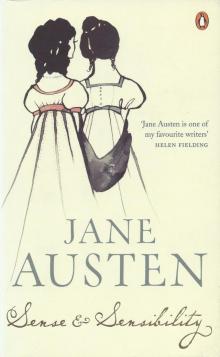 Sense and Sensibility
Sense and Sensibility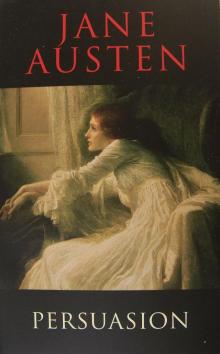 Persuasion
Persuasion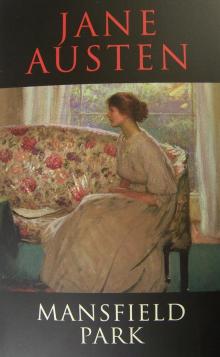 Mansfield Park
Mansfield Park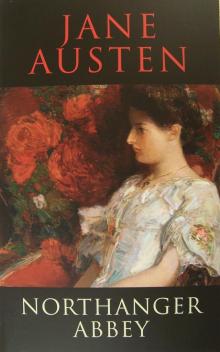 Northanger Abbey
Northanger Abbey Pride and Prejudice and Zombies
Pride and Prejudice and Zombies Pride and Prejudice
Pride and Prejudice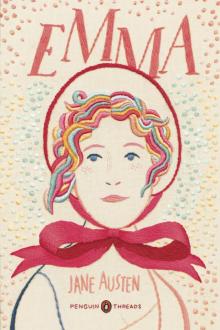 Emma
Emma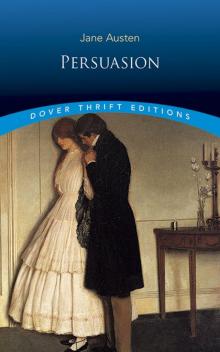 Persuasion (Dover Thrift Editions)
Persuasion (Dover Thrift Editions)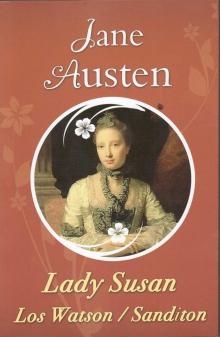 Lady Susan
Lady Susan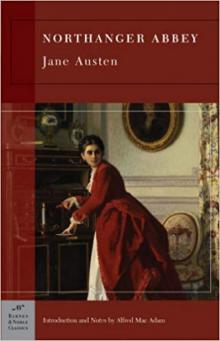 Northanger Abbey (Barnes & Noble Classics)
Northanger Abbey (Barnes & Noble Classics)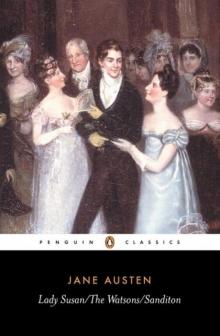 Lady Susan, the Watsons, Sanditon
Lady Susan, the Watsons, Sanditon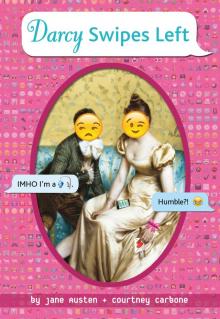 Darcy Swipes Left
Darcy Swipes Left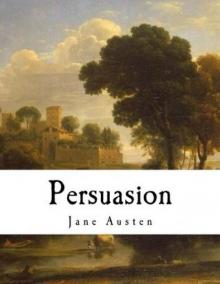 Persuasion: Jane Austen (The Complete Works)
Persuasion: Jane Austen (The Complete Works)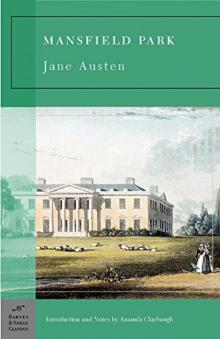 Mansfield Park (Barnes & Noble Classics Series)
Mansfield Park (Barnes & Noble Classics Series) Sense and Sensibility (Barnes & Noble Classics Series)
Sense and Sensibility (Barnes & Noble Classics Series)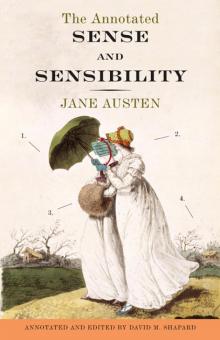 The Annotated Sense and Sensibility
The Annotated Sense and Sensibility Pride and Prejudice (Clandestine Classics)
Pride and Prejudice (Clandestine Classics)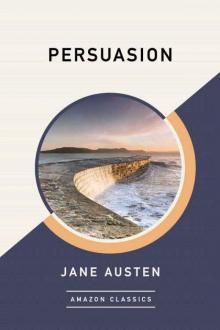 Persuasion (AmazonClassics Edition)
Persuasion (AmazonClassics Edition)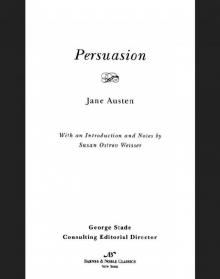 Persuasion (Barnes & Noble Classics Series)
Persuasion (Barnes & Noble Classics Series)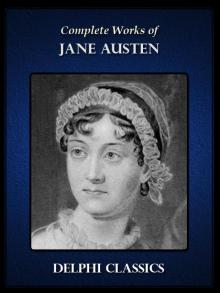 Complete Works of Jane Austen
Complete Works of Jane Austen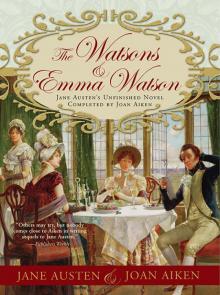 The Watsons and Emma Watson
The Watsons and Emma Watson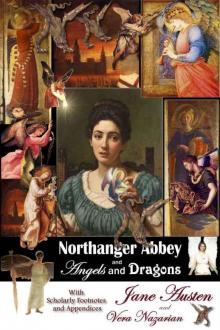 Northanger Abbey and Angels and Dragons
Northanger Abbey and Angels and Dragons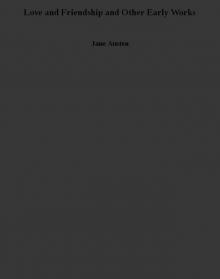 Love and Friendship and Other Early Works
Love and Friendship and Other Early Works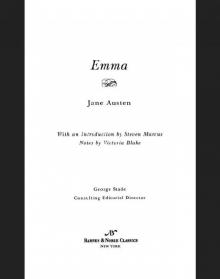 Emma (Barnes & Noble Classics Series)
Emma (Barnes & Noble Classics Series) Sanditon
Sanditon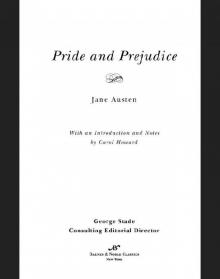 Pride and Prejudice (Barnes & Noble Classics Series)
Pride and Prejudice (Barnes & Noble Classics Series)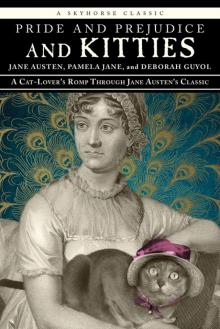 Pride and Prejudice and Kitties
Pride and Prejudice and Kitties The Annotated Northanger Abbey
The Annotated Northanger Abbey Oxford World’s Classics
Oxford World’s Classics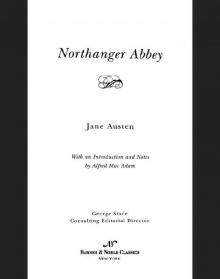 Northanger Abbey (Barnes & Noble Classics Series)
Northanger Abbey (Barnes & Noble Classics Series)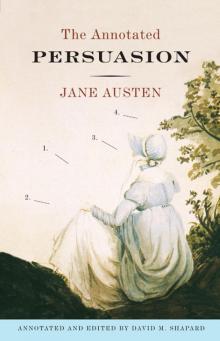 The Annotated Persuasion
The Annotated Persuasion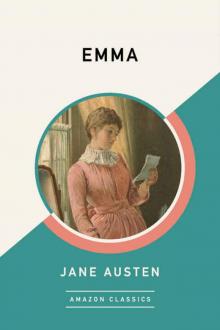 Emma (AmazonClassics Edition)
Emma (AmazonClassics Edition)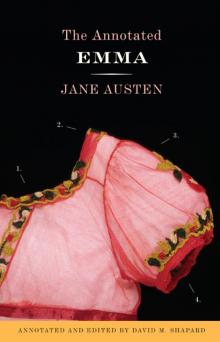 The Annotated Emma
The Annotated Emma The Annotated Mansfield Park
The Annotated Mansfield Park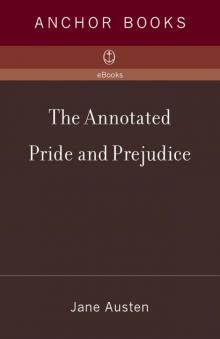 The Annotated Pride and Prejudice
The Annotated Pride and Prejudice